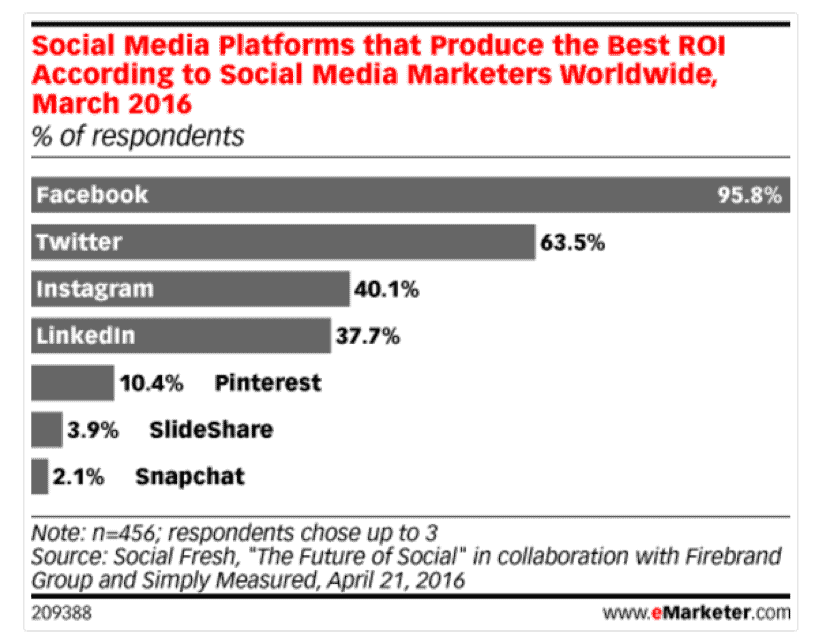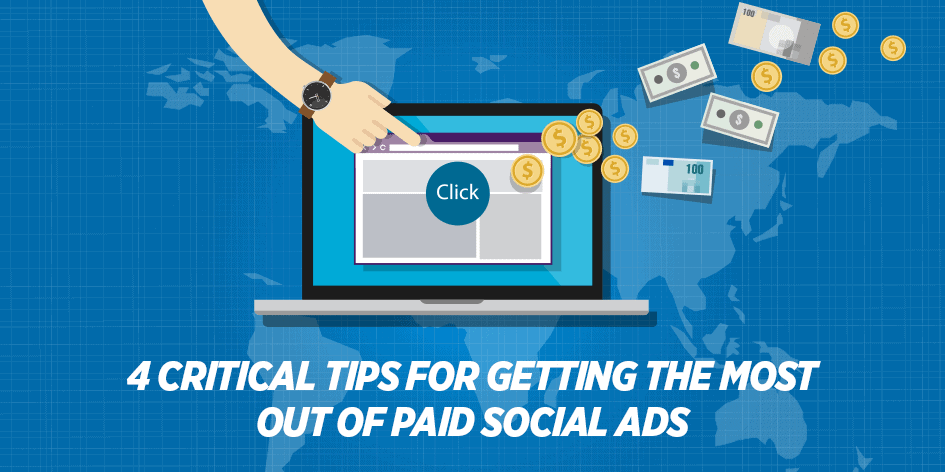Turning out high-quality content, working with powerful influencers, and using video strategically are all huge elements of any digital marketing strategy.
Although these concepts have been around for years – decades, even – the way they’re being used today is an extremely recent development.
However, just because the rules of marketing have changed over the past few years, prioritizing endorsements from “regular people” over celebrities and inbound tactics over outbound ones, it doesn’t mean that the entire playbook gets thrown out.
There’s one strategy that people (and companies) that have something to sell have been relying on for hundreds of years: paid advertising.
313 years, to be exact: that’s when the first American newspaper ad, an announcement that a Long Island estate was for sale in a 1704 edition of the Boston News-Letter, appeared.
That’s not to say that advertising looks much like it did back in the 1700s – or even the 2000s.
As both advertising platforms and consumers become more and more sophisticated, advertising is undergoing changes on a yearly, if not monthly basis.
Just look at digital advertising.
A few years ago, you couldn’t advertise on Instagram (they opened up the platform to advertisers in 2015).
Go a few years further back, to 2010, and Twitter was just rolling out advertising in the form of Promoted Tweets.
Today, you can advertise on virtually every social media platform – and with ever-more-accurate ad targeting, you can reach your advertising goals more quickly than ever.
With all the potential behind paid social ads, you want to make sure you’re getting everything you can out of them. Here are a few tips for maximizing your paid social ad results.
Here are a few tips for maximizing your #paidsocial ad results. Share on XPick the right social platform.
As with any digital advertising endeavor, you’ve got to be selective.
It’s true of content marketing – for example, there’s no point starting a profile on Medium if you’re not going to produce long-form content on a regular basis.
It’s true of social media. Why throw resources toward creating a Pinterest account if your audience doesn’t hang out on Pinterest?
And it’s especially true of social ads, especially because you’ve actually got to pay for those things.
It’s generally agreed-upon among marketers and brands of all shapes and sizes that Facebook produces the highest ROI for social ads, so Facebook advertising is pretty much a no-brainer. Just check out this chart from eMarketer – the stats were taken from a 2016 report called “The Future of Social” by Firebrand Group, Simply Measured, and Social Fresh.

But after Facebook, you’ve got choices to make. Just looking at the chart above, there’s Instagram, Twitter, LinkedIn, Pinterest – how do you decide which platform is right for you?
First, you’ve got to look at your target audience. Who are you trying to reach? Let’s go with a fairly simple example.
If you’re a B2B company that sells consulting services to financial organizations, then you’re going to want a platform that will reach financiers. LinkedIn is likely the best bet.
By contrast, if you’re a social gaming brand whose customers are mainly between the ages of 18 and 24, Snapchat is probably a great platform to explore.
Instagram and Pinterest can also yield excellent results, but only if you’re able to take advantage of their visual format. If your product or service doesn’t lend itself to compelling video or photo content, you may want to skip these platforms.
Target, target, and target some more.
Social advertising platforms have gotten so good at segmenting consumers that you can target your ad based on extremely narrow criteria. And lest you think that sounds like you’re just casting a smaller net, know that this kind of highly specific targeting is a good thing. A very good thing.
What it means is that you’re not having to waste dollars showing your ad to people who aren’t going to have any interest in it anyway.
In the old form of advertising, you bought an ad and hoped that it prompted a few people to take the next step toward buying your product or service.
Today, you can greatly increase your ROI by targeting your ads narrowly. You’ll start by choosing a location, gender, age, and language, and from there you can really start to find your audience.
On Facebook and Instagram, which use the same advertising tool, you can choose among these categories:
- Demographics – this includes everything from Education level and Income, to specific Life Events, Politics, and Job Titles.
- Interests – Facebook determines this from users’ activity on the site. Selections include Food and Drink, Sports, Clothing, etc. You can get more specific within each category.
- Behavior – This involves how people interact on Facebook, and includes everything from whether someone is looking for a new car, to whether they make charitable donations and to which causes.
You can see, then, how ultra-targeted your ads can be.
Ultra-targeted social ads will give you the most bang for your buck. Share on XAnd while you don’t want to get so narrow that you miss out on potential fans, you do want to get the biggest bang for your buck. So take advantage of these options, and experiment with different audiences. Then pay close attention to the analytics so you know what works and what doesn’t.
Learn the difference between Power Editor and Ads Manager.
Since we’re already talking about Facebook, we may as well cover another important Facebook ad-related topic: the difference between Power Editor and Ads Manager.
To put it most simply, Ads Manager is the standard ad tool that most users use. Power Editor is for more experienced ad managers who want to run more advanced, complex campaigns.
For example, let’s say you wanted to duplicate a successful Facebook ad campaign or ad set that you ran last month. Using Power Editor, you can select by a campaign, ad set, or individual ad and duplicate them with a single click. By contrast, in the Ads Manager, you would have to copy each ad individually.
After you’ve duplicated what you want to duplicate, you can customize each ad, ad set, or campaign as needed. That’s a huge time-saver for anyone who runs lots of Facebook ads.
Another advantage of Power Editor is the ability to edit multiple ads at once. If you need to change the headlines or content of many ads – if you have five or 10 campaigns of several ads each, say – Power Editor allows you to do that quickly and efficiently.
So how do you know which ad tool is better for you and your brand? It really comes down to how experienced you are at creating Facebook ads.
If you’ve been doing it for a while and you’re comfortable with how the Ads Manager works, you may want to try out Power Editor. Once you get the hang of how it works, it can save you a whole lot of time.
Design your social ads to fit mobile devices as well as desktops/laptops.
Fully 8 out of 10 internet users accessed social media on mobile devices in 2016, according to the Global Web Index.
So if you’re not designing ads to work for mobile, you might be turning away huge numbers of potential customers.
Of course, designing mobile ads isn’t the easiest thing in the world. They’ve got to be easy to read and view on a small screen, “swipeable,” and able to communicate at a glance whatever it is you want users to understand.
A few important pointers:
- Make your text big enough to be readable, but not so big that it takes up too much image space.
- Ensure that viewers have a readily visible way to close the ad if they don’t want to see it.
- Pay close attention to color. Bright, harsh color combinations can be extremely off-putting when viewed on smaller screens.
If you need some inspiration, check out ad galleries online – our favorite is HootSuite’s AdEspresso, which lets you browse thousands of real Facebook ads.
Social ads can offer huge ROI if you know how to maximize their potential for your brand.




